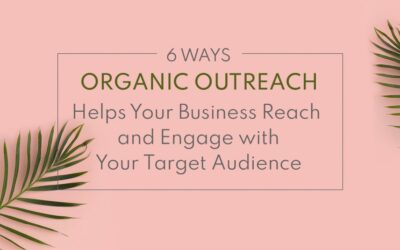Our Blog
Spring Creative Inc »Unlock the Power of AI: Opportunities for Your Business (and Staying Safe in the AI Landscape)
Unlock the Power of AI: Opportunities for Your Business (and Staying Safe in the AI Landscape)As marketing professionals, we're always learning and growing – there's never a dull moment! While we love what we do, it often means hours of computer time. We all know...
Why Your Business Needs a Blog: More Than Just a “News” Section
Why Your Business Needs a Blog: More Than Just a "News" SectionIn today's digital landscape, your website isn't just a static brochure – it's a dynamic hub for connecting with your audience and establishing your expertise. One of the most powerful tools for achieving...
Protecting Your Digital Assets: Staying Safe from Online Threats
Protecting Your Digital Assets Staying Safe from Online ThreatsThe currents of uncertainty swirling around US politics are undeniably creating ripples throughout our business community here in Nelson and beyond. In times like these, when the ground feels less stable,...
Navigating Uncertainty: In a Shifting Landscape, True Value and Remarkability Are Your Anchors.
NAVIGATING UNCERTAINTY: In a Shifting Landscape, True Value and Remarkability Are Your Anchors.The currents of uncertainty swirling around US politics are undeniably creating ripples throughout our business community here in Nelson and beyond. In times like these,...
Customer Experience in 2025: The Power of Human Connection
Customer Experience in 2025: The Power of Human ConnectionIn the bustling world of business, it's easy to get caught up in the numbers: sales figures, website traffic, conversion rates. But amidst all the data, it's crucial to remember one essential truth: happy...
How To Build Meaningful Connections Through Branding
Emotional branding goes beyond simply promoting products and services; it aims to create a deep emotional connection between customers and brands. It involves understanding the desires, aspirations, and values of the target audience, and then crafting a brand identity...
Six Questions to Answer When Writing Your Brand Story
Your target audience is ultimately looking for connection with you and will develop a relationship with your brand if it resonates with them. Answer these questions to create and clarify your brand story.1. Where are you now? You want to give your audience a glimpse...
Behind the Scenes of Facebook Marketing
Recently, a user clicked on a link that a friend posted to a website to buy a pair of boots. On the same day, they started receiving Facebook (FB) ads for similar boots from different brands on various sites. They understood that Facebook could use previous Google...
Are Keywords Still Important for SEO?
The power of Search Engine Optimization (SEO) has always been an important tool for digital marketers. However, as online search algorithms place increasing importance on the quality of written content behind a brand’s digital presence, one wonders is SEO still...
Twelve Commonly Asked Questions About SEO and Why It Helps Your Business
Have you heard that improving your Search Engine Optimization (SEO) improves your chances of being easily found online? Wendy Piersall, online entrepreneur and author says it best. “Google only loves you, when everyone else loves you first.” Google, with over 70% of...
How to Write a Blog with an Outline
When baking a cake, you follow the recipe in a logical sequence to ensure that your confection rises and tastes delicious. The same goes for a blog. Our recipe begins with a BLOG OUTLINE. By following the steps of the outline, your ingredients for the blog are added...
Earth Day 2021
Make choices every day that reduce your impact on the earth. Together we can change the world. #earthday2021Spring Creative Inc. is an award-winning agency specializing in marketing, design, and digital services. We empower brands to communicate effectively and...
Six Ways Organic Outreach Helps Your Business Reach and Engage with Your Target Audience Spring Creative
WHAT IS ORGANIC OUTREACH EXACTLY AND WHAT DOES IT DO? A combination of mostly online methods—think email newsletters and blogging, social media posts, free content, videos and podcasts, online reviews, testimonials and more—allow you to reach your target audience and...
Tips and Tricks to Managing your Email Inbox
1) Schedule Email Visitation TimesSet two scheduled times per day to i) look at and ii) reply to and iii) delete or file incoming emails. Also schedule time once a week to clean up/manage your inbox. It’s easier to keep up, then to drop out and try to catch up....
How to Utilize Perspective to Brand Your Organization
Energetically, the foundation of your organization, its purpose and overall vision needs to match your brand identity—what your target client sees and experiences about your company. Your brand identity is the personality of your organization and the promises it...
Positive Change at Work
We know Canadians have been stepping up during the pandemic: our frontline workers are tirelessly taking care of the elderly and the sick, people are working in the community cleaning, serving, delivering, and transporting essential goods. Leading by example, our...
Why We are Donating to The Cottonwood Lake Preservation Society
Choosing to donate through our agency to the Cottonwood Lake Preservation Society (CLPS) was an easy decision for our team. Many of us had already made personal donations so it was a natural next step to make a contribution as a business. As longtime residents of...
How to Brand Your Small Business the Easy Way
To be recognized in your industry, easily found by your target audience, and to magnify your business presence, your branding must be compatible with your long-term vision. However, spending time on this crucial branding process can be challenging while managing a...
Creating Branding Clarity
As the communication landscape rapidly changes, it becomes challenging to find the right path to achieve marketing goals. Whether you are a business owner, organization leader or a solo-prenure you are faced with a similar underlying question when it comes to deciding...
The Source of Spring Creative
The fact that Fern Sabo brings over twenty years of award-winning marketing and visual design experience to her agency, Spring Creative is all the more remarkable because of her upbringing. She was raised off the grid in the remote community of Argenta, deep in the...
Creating Impact by Design
While a beautiful logo is an impressive asset, what you need for business success are clearly-defined goals, strategic marketing tactics and real-time action. We know from experience that it can be overwhelming assembling your visual marketing plan. Having a team in...





















